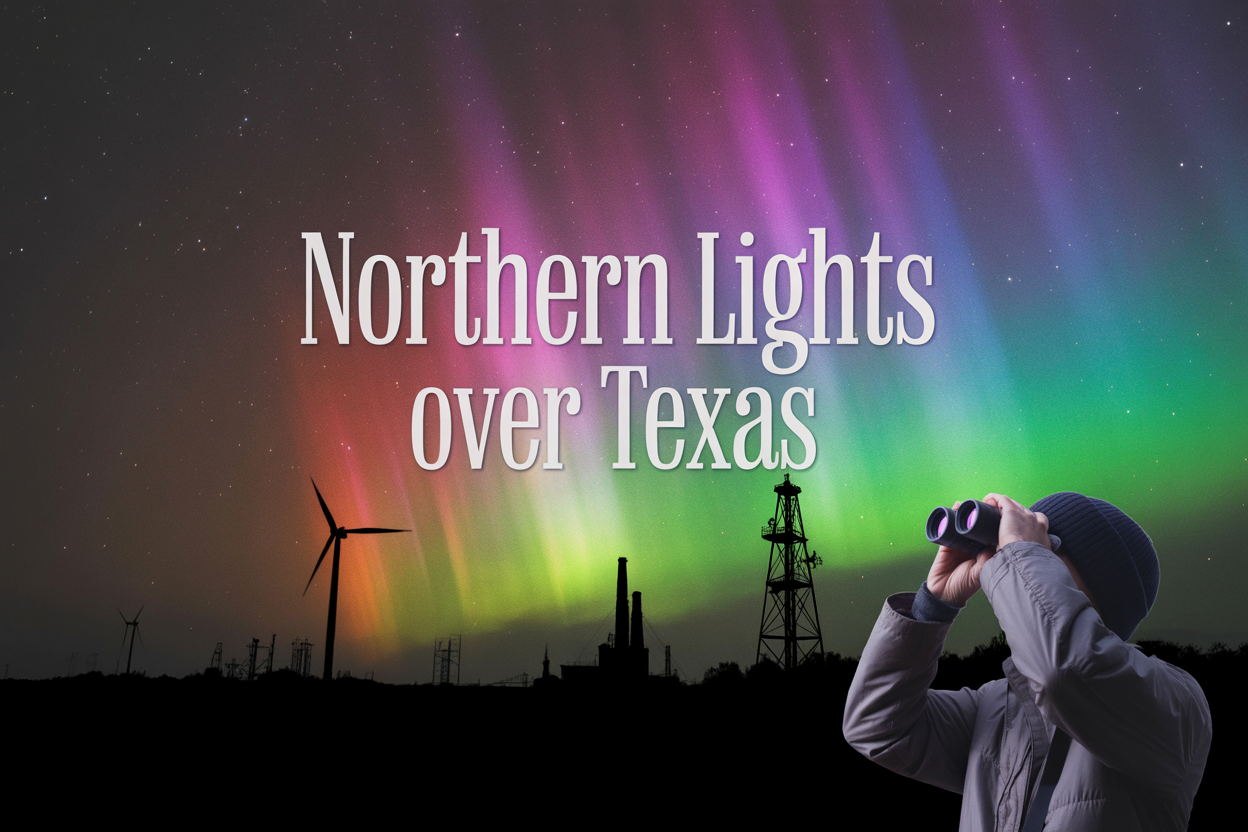A powerful geomagnetic storm is bringing the aurora borealis south Thursday night, creating rare viewing opportunities across much of the United States. This northern lights forecast for October 16 has stargazers and casual observers wondering if they’ll catch the spectacular light show from their backyard.
This guide is for anyone curious about seeing the northern lights tonight, especially residents in southern states like Texas who rarely get these chances. We’ll break down what’s causing this unusual aurora activity, check the current northern lights forecast for different U.S. regions, and explore whether Texas has any real shot at glimpsing the famous dancing lights. You’ll also get practical tips for making the most of your viewing experience if the aurora does reach your area.
Understanding the Northern Lights Phenomenon Occurring Thursday Night
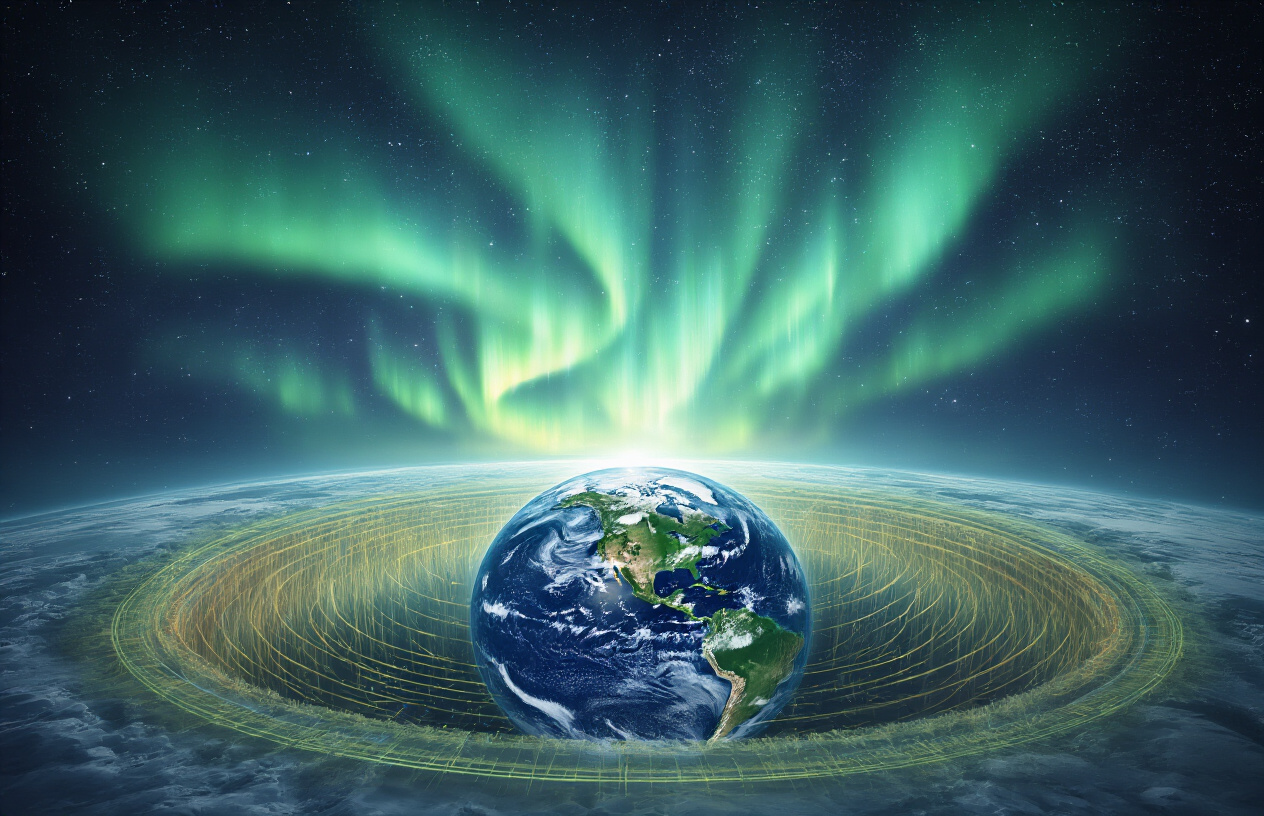
Solar storm activity triggering enhanced aurora visibility
A powerful geomagnetic storm is brewing in space, creating perfect conditions for tonight’s spectacular northern lights display. This celestial event starts with our sun, which has been particularly active lately, ejecting massive clouds of charged particles called coronal mass ejections (CMEs) into space. When these solar particles collide with Earth’s magnetic field, they create the stunning aurora borealis we’re expecting to see.
The current solar storm registers as a G3 (strong) to potentially G4 (severe) geomagnetic storm on the space weather scale. This level of intensity means the charged particles will penetrate deeper into our atmosphere than usual, exciting oxygen and nitrogen molecules at different altitudes. Oxygen produces those iconic green curtains we associate with northern lights, while nitrogen creates purple and blue hues lower in the atmosphere.
What makes tonight special is the storm’s sustained intensity. Rather than a brief burst of activity, forecasters predict several hours of enhanced geomagnetic conditions. The solar wind speed is expected to reach 600-700 kilometers per second, carrying a dense concentration of particles that will interact dramatically with Earth’s magnetosphere.
Geographic range extending further south than usual
Tonight’s geomagnetic storm will push the aurora viewing zone much further south than typical northern lights events. While auroras usually remain confined to northern Canada and Alaska, this enhanced activity will likely make them visible across the northern tier of U.S. states.
The auroral oval – the ring-shaped zone where northern lights typically appear – will expand significantly southward. States like Minnesota, Wisconsin, Michigan, and northern New York have excellent chances of witnessing the display. Even areas as far south as Pennsylvania, Iowa, and Nebraska might catch glimpses of the aurora on the northern horizon.
The key factor determining visibility is something called the Kp index, which measures geomagnetic disturbance levels. Tonight’s forecast suggests Kp values between 6 and 7, which historically brings auroras down to magnetic latitudes around 50-55 degrees. This places the potential viewing zone across much of the northern United States.
Weather conditions will play a major role in actual visibility. Clear, dark skies away from city lights offer the best viewing opportunities. Unfortunately, cloud cover will block the view entirely, so checking local weather forecasts becomes just as important as monitoring space weather conditions.
Optimal viewing times and duration expectations
The northern lights forecast for tonight shows peak activity occurring between 10 PM and 2 AM local time across most viewing areas. This timing coincides with when the solar storm’s effects will be strongest and when skies are naturally darkest.
The show could begin as early as 9 PM in some locations, with initial faint glows appearing on the northern horizon. Activity typically builds throughout the late evening hours, reaching maximum intensity around midnight. The display may continue into the early morning hours, potentially lasting until dawn in areas with the strongest geomagnetic activity.
Unlike brief meteor showers, tonight’s aurora could provide several hours of viewing opportunities. The sustained nature of this particular geomagnetic storm means the northern lights might appear in waves, with periods of intense activity followed by calmer moments, then ramping up again.
For the best experience, plan to spend at least 30-45 minutes outside. Your eyes need about 20 minutes to fully adjust to darkness, and aurora displays often start subtly before building to more dramatic shows. The lights might appear as faint green glows initially, then develop into dancing curtains, pillars, or even corona formations directly overhead in prime viewing locations.
Mobile aurora apps and websites will provide real-time updates on activity levels, helping viewers time their observations for peak display periods.
Current Aurora Forecast for the United States
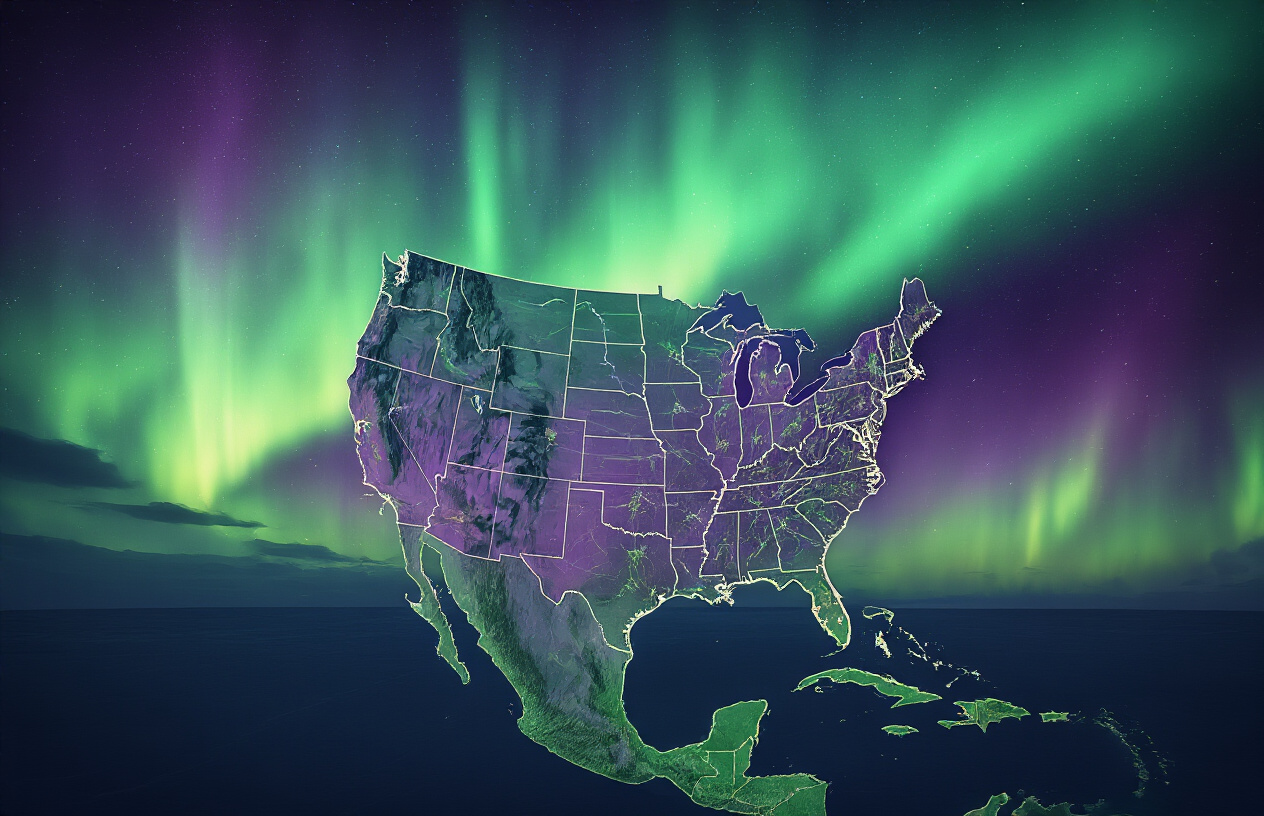
States with Highest Probability of Northern Lights Visibility
The northern lights forecast for tonight shows the best viewing chances across several northern tier states. Alaska leads the pack with near-certain visibility, while northern Montana, North Dakota, and Minnesota offer excellent prospects for catching the aurora borealis. The geomagnetic storm intensity creates a viewing corridor that extends further south than usual, bringing northern lights possibilities to Wisconsin, Michigan, and parts of upstate New York.
Washington state’s northern counties and northern Idaho also rank high on tonight’s northern lights forecast. Maine’s remote areas away from coastal fog should provide decent viewing opportunities. Even portions of Vermont, New Hampshire, and northern Pennsylvania might catch glimpses if clouds cooperate.
The viewing probability drops significantly as you move south, but the current geomagnetic storm could push the aurora oval down to include southern Wisconsin, Iowa, and possibly northern Illinois. These areas represent the southern edge of tonight’s viewing zone.
Atmospheric Conditions Affecting Viewing Quality
Clear, dark skies make all the difference when hunting for northern lights tonight. Light pollution remains the biggest enemy of aurora viewing, washing out the subtle greens and purples that dance across the sky. Rural areas far from city lights offer the best viewing conditions, while urban locations may only catch the brightest displays.
Cloud cover presents another major challenge. Even thin, high-altitude clouds can completely obscure the northern lights. The best viewing happens on crisp, clear nights with minimal atmospheric moisture. Temperature plays a role too – colder air tends to be drier and clearer, creating better visibility conditions.
Moon phase affects viewing quality in surprising ways. While a new moon provides the darkest skies, a quarter moon can actually help by providing enough light to see your surroundings without overwhelming the aurora display.
Geomagnetic Storm Intensity Predictions
Tonight’s geomagnetic storm registers as a G2 to G3 class event, creating favorable conditions for northern lights viewing across much of the northern United States. This moderate to strong storm level pushes the aurora oval significantly southward from its typical Arctic position.
The storm results from a coronal mass ejection that left the sun several days ago, with solar particles now interacting with Earth’s magnetic field. Peak storm intensity should occur during evening hours, coinciding perfectly with optimal viewing times across the continental United States.
Geomagnetic activity levels remain elevated through early Friday morning, giving viewers multiple opportunities to spot the aurora borealis. The storm’s duration and intensity suggest that even locations on the viewing zone’s southern edge might catch the display during peak activity periods.
Weather Patterns That Could Impact Visibility
High pressure systems dominating much of the northern Plains and Great Lakes region bring clear skies perfect for northern lights viewing. This weather pattern keeps cloud cover minimal across prime viewing areas in Montana, North Dakota, and Minnesota.
A weak frontal system moving through the Pacific Northwest could bring scattered clouds to Washington and Oregon, potentially blocking views in those areas. However, breaks in the cloud cover might still allow glimpses of the aurora display.
The jet stream’s current position helps maintain stable atmospheric conditions across most northern tier states. Wind patterns remain light, reducing atmospheric turbulence that can make aurora viewing more difficult. Temperature gradients stay moderate, preventing the formation of fog or low-level moisture that often obscures astronomical events.
Coastal areas face additional challenges from marine layers and sea fog, particularly along the Great Lakes and Atlantic seaboard. Inland locations consistently offer better viewing prospects when weather conditions cooperate with geomagnetic activity levels.
Texas Aurora Viewing Prospects and Challenges
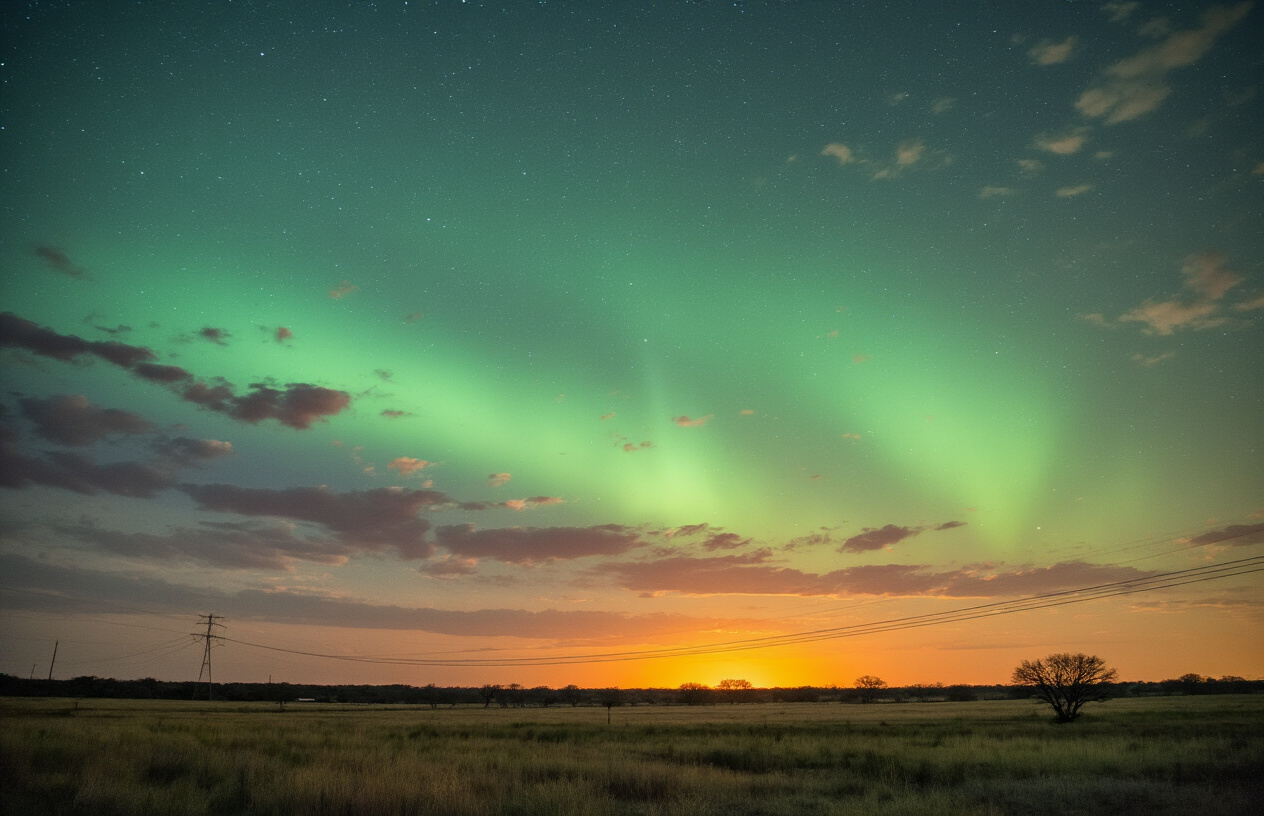
Historical Northern Lights Sightings in Texas
Texas has witnessed the northern lights on surprisingly few occasions throughout recorded history, making any potential aurora borealis geomagnetic storm event extremely rare for the Lone Star State. The most notable sighting occurred during the Great Geomagnetic Storm of March 1989, when residents across central and northern Texas reported seeing faint green and red glows on the horizon. Prior to that, the Halloween Storm of 2003 brought aurora activity as far south as Dallas-Fort Worth, though visibility remained limited to the northern counties.
More recently, the powerful geomagnetic storm of May 2024 pushed aurora visibility into parts of East Texas, with confirmed sightings reported in cities like Tyler and Marshall. These events typically require geomagnetic storm conditions of G3 or higher on the NOAA scale, with the aurora oval expanding significantly southward from its usual Arctic position. Most Texas sightings appear as a faint reddish or greenish glow along the northern horizon rather than the dramatic dancing curtains commonly associated with northern lights displays.
Light Pollution Obstacles in Major Texas Cities
Texas metropolitan areas present significant challenges for northern lights viewing due to extensive light pollution that washes out faint aurora displays. Dallas-Fort Worth, Houston, San Antonio, and Austin create massive light domes that extend 50-100 miles beyond city limits, effectively blocking out all but the brightest astronomical phenomena.
The Bortle Scale, which measures light pollution levels, rates most major Texas cities between Class 8-9 (bright suburban to inner-city sky), where only the brightest planets and stars remain visible. Even during strong geomagnetic storms, aurora activity would need to reach exceptional intensity levels to penetrate this artificial brightness.
Houston’s industrial corridor along the Gulf Coast creates particularly challenging conditions, with petrochemical facilities adding continuous artificial illumination throughout the night. Similarly, the Dallas-Fort Worth metroplex stretches across multiple counties, creating an unbroken canopy of light pollution that extends well into rural areas.
Best Locations Within Texas for Potential Viewing
Your best chances for catching the northern lights tonight or during any future aurora forecast depend heavily on escaping major population centers. The Texas Panhandle offers the most promising conditions, particularly areas north of Amarillo and around Canadian, Texas, where light pollution remains minimal and northern horizons stay unobstructed.
Big Bend National Park and the surrounding Davis Mountains region provide exceptionally dark skies, though their southern latitude makes aurora viewing more challenging. These locations offer Class 1-2 Bortle ratings but may require extremely powerful geomagnetic storms to see aurora activity.
East Texas locations like Caddo Lake State Park or Martin Creek Lake State Park balance reasonable darkness with slightly better northern latitude positioning. Rural areas along the Red River, including spots near Texarkana or Marshall, historically showed the best results during past aurora events.
| Viewing Location | Distance from Major City | Light Pollution Level | Northern Horizon |
|---|---|---|---|
| Palo Duro Canyon | 25 miles from Amarillo | Class 3-4 | Excellent |
| Big Bend National Park | 100+ miles from El Paso | Class 1-2 | Good |
| Caddo Lake State Park | 20 miles from Marshall | Class 4-5 | Excellent |
| Davis Mountains | 75 miles from El Paso | Class 2-3 | Fair |
Maximizing Your Northern Lights Viewing Experience
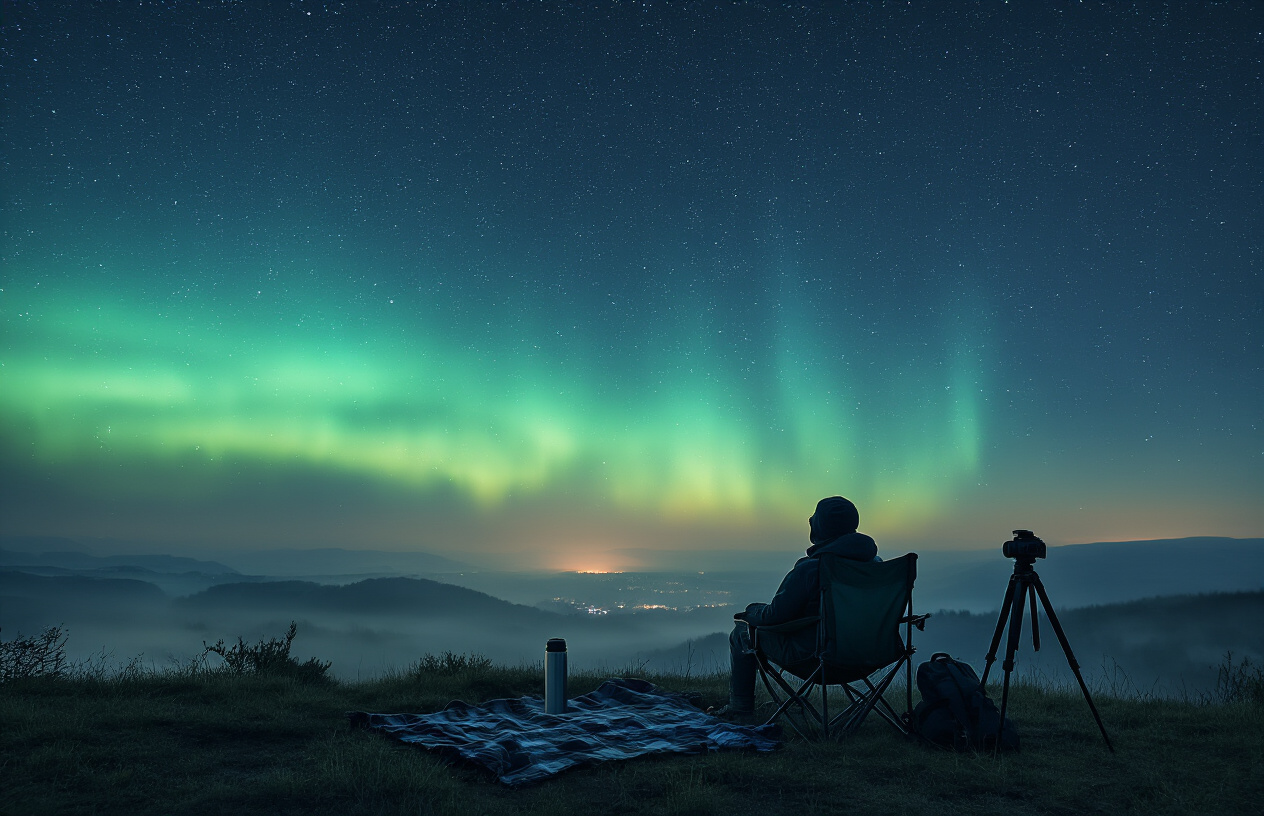
Essential preparation tips for aurora watching
Check the aurora forecast before heading out, as geomagnetic storm activity directly affects visibility. The Space Weather Prediction Center provides real-time updates on solar activity and aurora predictions. Download aurora tracking apps like Aurora Alerts or My Aurora Forecast to receive notifications when conditions improve.
Scout your viewing location during daylight hours. Find areas with minimal light pollution, away from cities and streetlights. Open fields, elevated areas, or lakeshores work best. Ensure you have safe parking and easy access, as you’ll be navigating in darkness.
Dress in layers and bring warm gear, even during warmer months. Nights get surprisingly cold when standing still for extended periods. Pack blankets, hand warmers, thermoses with hot drinks, and waterproof seating. A red flashlight preserves night vision while allowing you to navigate safely.
Arrive at least 30 minutes before the predicted aurora activity begins. Your eyes need time to adjust to darkness for optimal viewing. Avoid looking at bright screens or lights during this adjustment period.
Camera settings and photography techniques
Set your camera to manual mode for complete control over exposure settings. Start with ISO 1600-3200, aperture f/2.8 or wider, and shutter speeds between 10-25 seconds. Higher ISOs capture fainter auroras but introduce noise, so find the sweet spot for your equipment.
Use a sturdy tripod to eliminate camera shake during long exposures. A remote shutter release or timer function prevents vibrations when taking photos. Focus manually on infinity or a distant star, as autofocus struggles in low light.
Shoot in RAW format to maximize post-processing flexibility. Aurora colors often appear more vivid in photographs than to the naked eye due to camera sensors’ sensitivity to light wavelengths.
Take test shots and adjust settings based on aurora intensity. Brighter displays allow shorter exposures and lower ISOs, while faint auroras require longer exposures. Bracket your shots with different settings to ensure you capture the best possible images.
Safety considerations for nighttime viewing
Inform someone about your viewing location and expected return time. Cell service may be limited in remote areas with dark skies. Carry a fully charged phone and consider bringing a portable battery pack.
Drive carefully to and from viewing locations. Rural roads may have wildlife, and excitement about the northern lights forecast can lead to distracted driving. Park completely off roadways and use hazard lights if necessary.
Watch your step in unfamiliar terrain during darkness. Holes, rocks, or uneven ground pose tripping hazards. Wear appropriate footwear with good traction, especially if frost or dew makes surfaces slippery.
Be aware of your surroundings and other aurora watchers. Popular viewing spots can become crowded, and car doors slamming or bright headlights can disrupt everyone’s experience. Practice good aurora etiquette by using dim red lights and keeping noise to a minimum.
Alternative viewing options if direct observation fails
Live aurora webcams provide real-time views from locations experiencing geomagnetic storm activity. The University of Alaska Fairbanks and various astronomy sites stream northern lights when they’re active, allowing you to witness the phenomenon even if your local skies don’t cooperate.
Aurora photography groups on social media share images and updates throughout active periods. Join Facebook groups or follow Instagram accounts dedicated to aurora chasing for stunning visuals and real-time reports from successful viewers.
Planetariums and astronomy centers sometimes host special aurora viewing events or presentations during significant geomagnetic storms. These educational programs explain the science behind the northern lights while showing professional photography and time-lapse videos.
Virtual reality experiences and high-quality documentaries offer immersive alternatives when weather or location prevents direct viewing. While not matching the real experience, these options provide detailed looks at aurora formations and colors that might not be visible to the naked eye during actual viewing sessions.
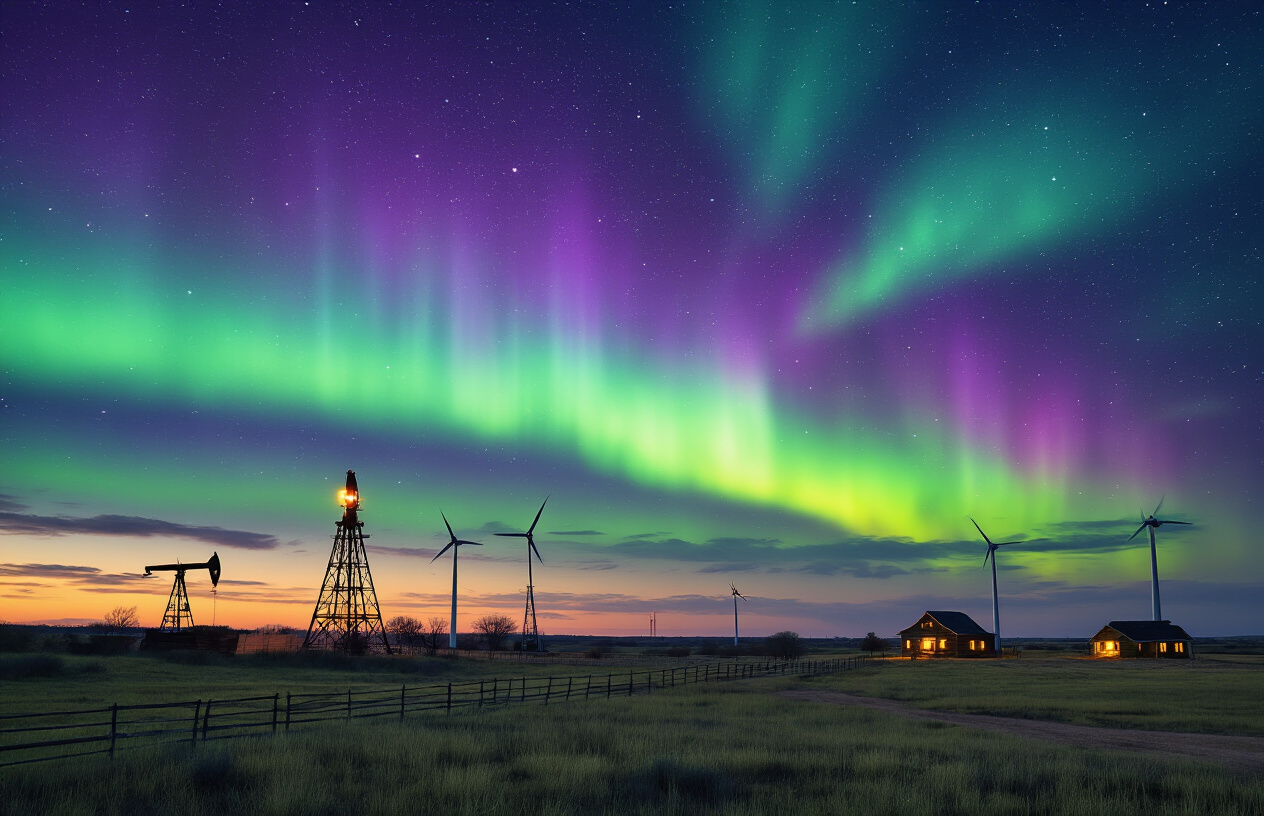
Thursday night’s aurora activity brings an exciting opportunity for stargazers across much of the United States, though Texas faces some real challenges in catching this celestial show. While northern states have the best shot at seeing the lights, parts of Texas might get lucky if the geomagnetic storm strengthens and viewing conditions align perfectly. The key factors working against the Lone Star State include its southern latitude, light pollution from major cities, and the need for exceptionally strong solar activity to push the aurora far enough south.
If you’re in Texas and want to try your luck, head to the darkest area you can find, look north after sunset, and be patient. Even if the northern lights don’t make it to Texas this time, understanding how auroras work and keeping an eye on space weather forecasts will help you be ready for future opportunities. The northern lights are becoming more frequent as we approach solar maximum, so more chances are coming for everyone to witness this incredible natural light show.
